By 2025, influencers and brands have more ways to create custom t-shirts due to the growing number of different types of t-shirt printing. Deciding on the right printing method helps guarantee that the design stays looking good and lasts for a long time.
Being aware of your options, whether in apparel printing or in t-shirt printing materials, is extremely helpful. When choosing the best method, design details, type of fabric needed, the size of the order, how much it costs and its environmental impact matter a lot.
At Innovate Apparel, we guide you through the best types of t-shirt printing techniques so you can select the ideal process for your needs. This blog highlights the six best t-shirt printing techniques in 2025, giving ideas for printing that lasts and looks great.
6 Best Types of T-Shirt Printing Methods
All methods give different results and work best for different use cases, allowing you to pick the one that suits your preferences or budget. To help you choose, let’s review the top types of t-shirt printing for your needs in 2025.
1. Direct-to-Garment (DTG) Printing
When tshirts are printed using Direct-to-Garment (DTG), they give the best detailed and vibrant look. With these types of t-shirt printing, the printer sprays eco-friendly, water-based ink directly onto the shirt. As the ink is absorbed, the result feels soft and comfortable.
Before DTG printing, the shirt must be pre-treated and then the design is printed by the DTG printer. Finally, the design is cured using heat. It works best on cotton or cotton-blend fabrics, making it a top choice for brands like Innovate Apparel that value comfort and print quality.
Pros of DTG Printing
- Perfect for detailed, full-color artwork
- No minimum order quantity; great for small batches
- Eco-friendly with minimal ink waste
- Soft prints that don’t crack or peel
Cons of DTG Printing
- Not ideal for dark or polyester fabrics
- Higher cost for machines and maintenance
- Shorter lifespan on some materials
DTG is great for custom prints, on-demand services, and short runs, making it a standout among modern types of apparel printing. If your t-shirt printing material list includes cotton, these types of t-shirt printing methods are worth considering in 2025.
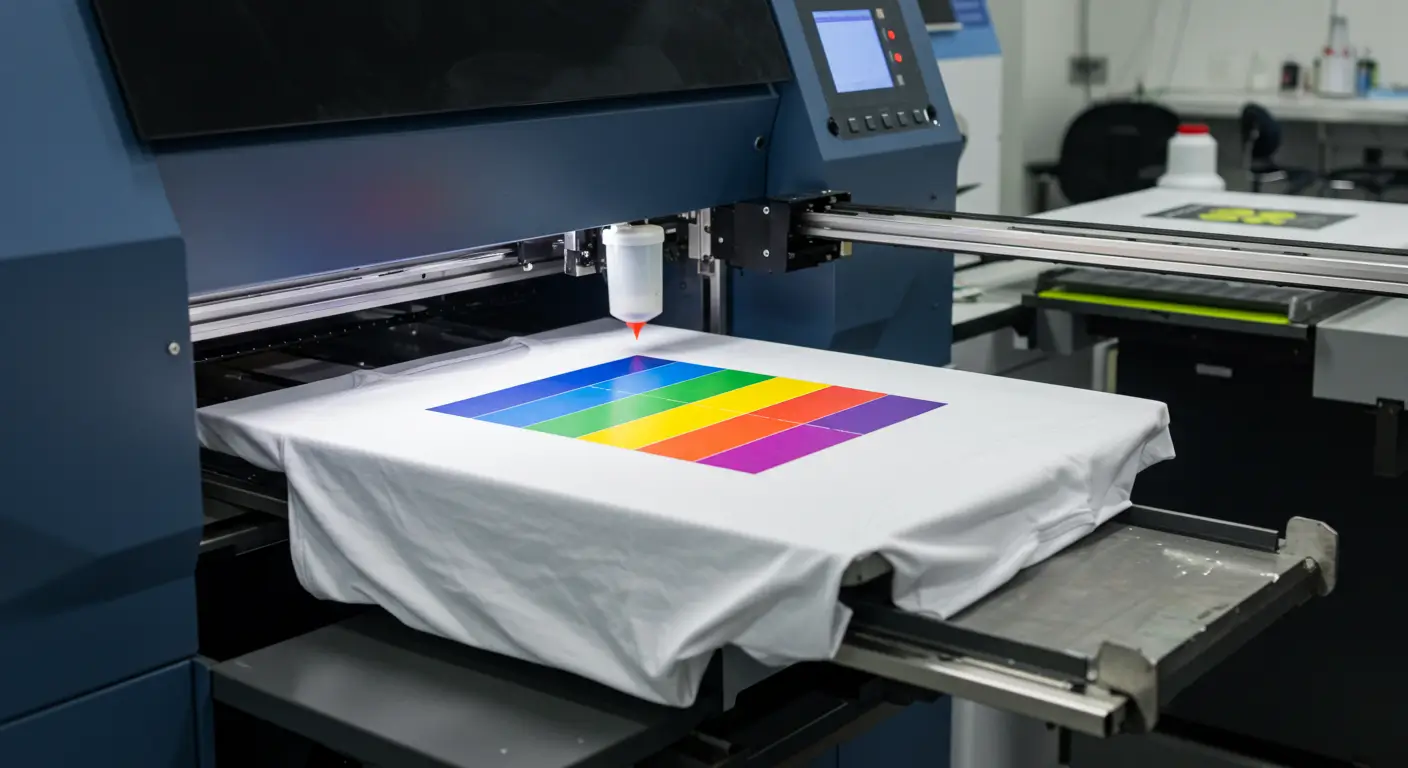
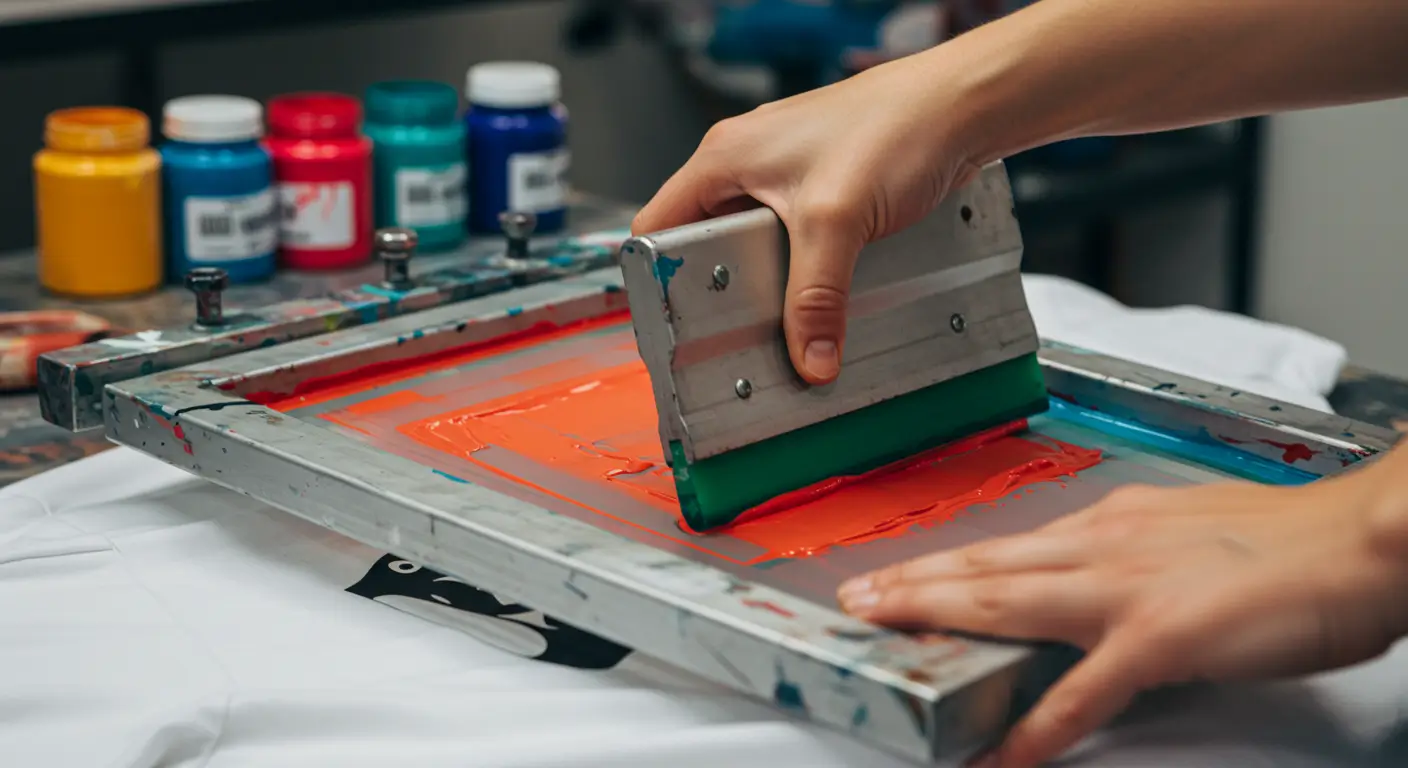
2. Screen Printing
People still depend on screen printing as one of the most trusted types of t-shirt printing in 2025. A stencil and a mesh screen are used to push ink onto the material. Because each color gets its own screen, this is best for straightforward designs made in large batches.
The steps are: screen preparation, the application of emulsion and exposure to light for the stencil. The printer lays down ink a step at a time on the shirt. A major advantage of these types of t-shirt printing is that you can make strong prints on many different fabrics, so brands can print large amounts using this method.
Pros of Screen Printing
- Bright, long-lasting prints that hold up over time
- Very cost-effective for large batches
- Works on many types of fabric, including blends
Cons of Screen Printing
- Not ideal for small orders due to long setup time
- Limited detail and color blending
- Can generate waste from excess ink and chemicals
Bold logos, promotional wear and uniforms can be printed best using screen printing methods. Trying to get great quality shirts that are also budget-friendly? Digital transfer printing is your answer.
3. Dye Sublimation Printing
Dye sublimation is among the brightest types of t-shirt printing today and it works best with polyester fabrics. Heat allows the dye from the print to move onto the fabric which results in colors that won’t fade or separate. It suits all-over prints and patterns that are detailed well.
Sublimation ink is used to print the design onto special transfer paper in the beginning. After that, a heat press literally presses the ink into the fabric with a combination of heat and pressure. The result is a soft finish that seems to be part of the shirt.
At Innovate Apparel, dye sublimation is used when we need edge-to-edge designs with vivid color on activewear or promotional tees.
Pros of Dye Sublimation
- Produces permanent, fade-resistant prints
- Allows all-over printing with detailed patterns
- Fabric remains soft and breathable
Cons of Dye Sublimation
- Only works on light-colored polyester fabrics
- Not suitable for cotton
- Higher setup costs and material requirements
Dye sublimation ranks high on any t-shirt printing material list if you’re targeting sportswear, fashion apparel, or full-coverage graphics. It’s one of the best choices among types of apparel printing for polyester.
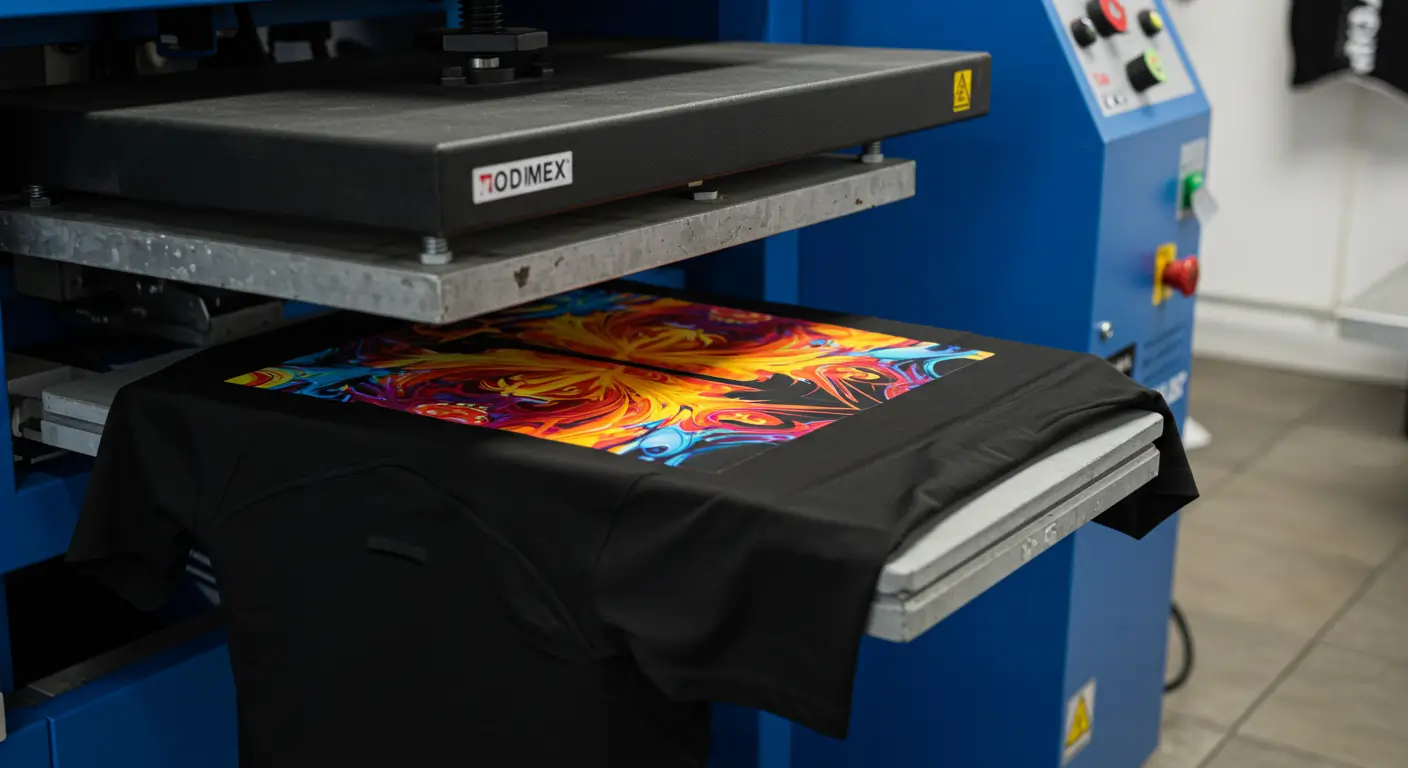
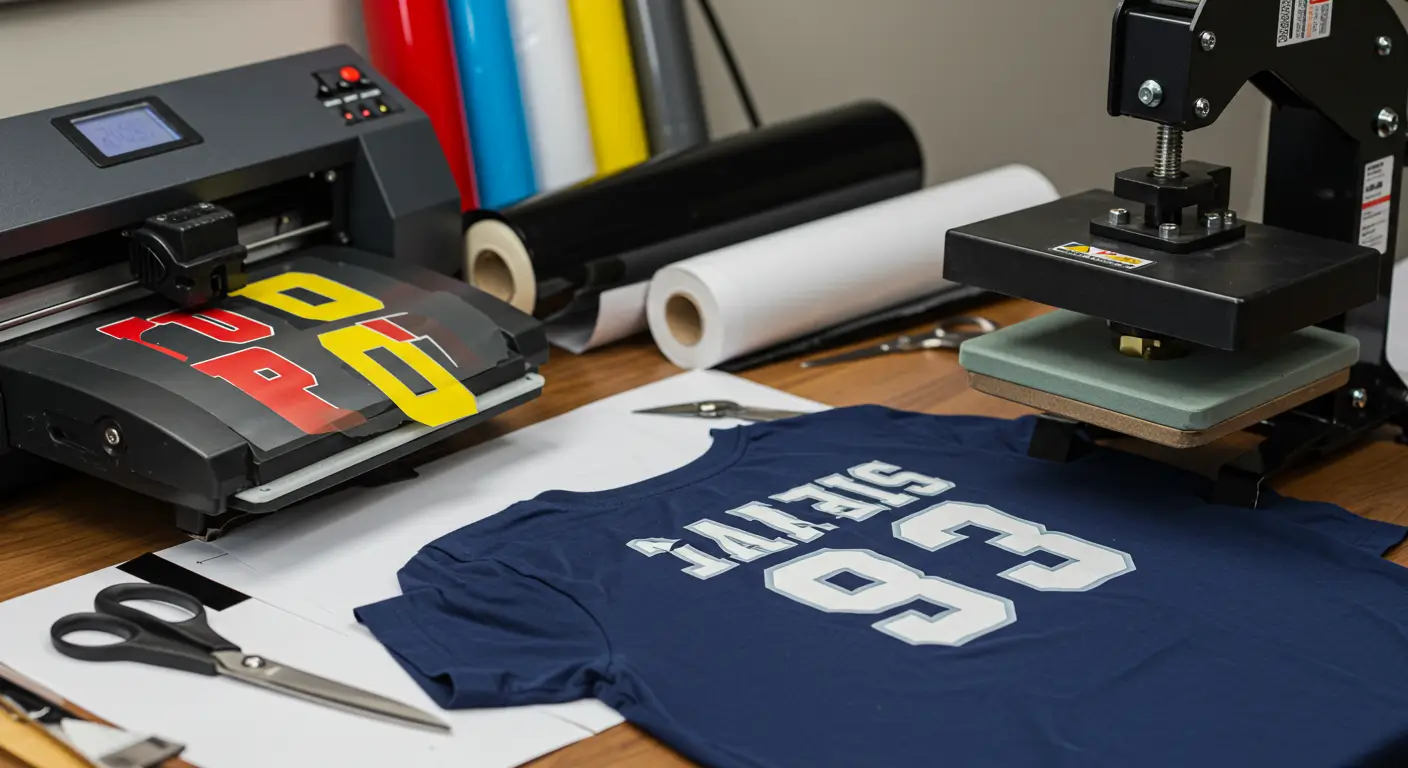
4. Heat Transfer Vinyl (HTV) Printing
Heat Transfer Vinyl (HTV) is a common choice for people new to different types of t-shirt printing. The steps are to cut designs out of colored vinyl sheets and transfer them to the fabric by pressing them with heat. A vinyl cutter is used to cut each insignia out, extra parts are removed and then the insignia is pressed onto the shirt.
You can use it to design names, numbers and logos, especially for things like uniforms or custom products. Hits on cotton, polyester and blends tend to stick better. Whenever we have clients wanting small-batch or personalized jobs or fast results for very simple designs on shirts, we go with HTV.
Pros of HTV Printing
- Budget-friendly and perfect for beginners
- Works well for simple shapes, letters, and logos
- Suitable for small batches and DIY jobs
Cons of HTV Printing
- Not ideal for complex or multi-colored designs
- Prints have a stiff texture
- Limited scalability for bulk orders
If you’re exploring shirt printing techniques that are easy and affordable, HTV printing is a solid option. It earns a spot on any t-shirt printing material list for its simplicity and versatility in the world of types of apparel printing.
5. Plastisol Transfer Printing
Plastisol Transfer Printing is one of the types of t-shirt printing that takes components of both screen printing and heat transfer. Screen printing t-shirts requires the design to be first printed onto a special transfer paper. The paper print is heat-sealed onto the shirt afterwards. It allows us to get the results of screen printing, plus the benefits of transfers.
Printed transfers can be kept and then used when needed which helps with efficient production. Custom merchandise at Innovate Apparel frequently uses Plastisol transfers because having good quality and quick turnaround is important.
Pros of Plastisol Transfer Printing
- Durable, high-quality prints
- Allows for unique finishes like gloss and texture
- Transfers can be stored and applied when needed
Cons of Plastisol Transfer Printing
- Time-consuming setup process
- Not ideal for high-detail or photo-realistic images
- Best suited for limited color designs
If you need to print t-shirts in medium batches, Plastisol transfer is a steady choice. For companies wanting flexibility and good quality in their printed t-shirts, it is well worth mentioning in any material list.
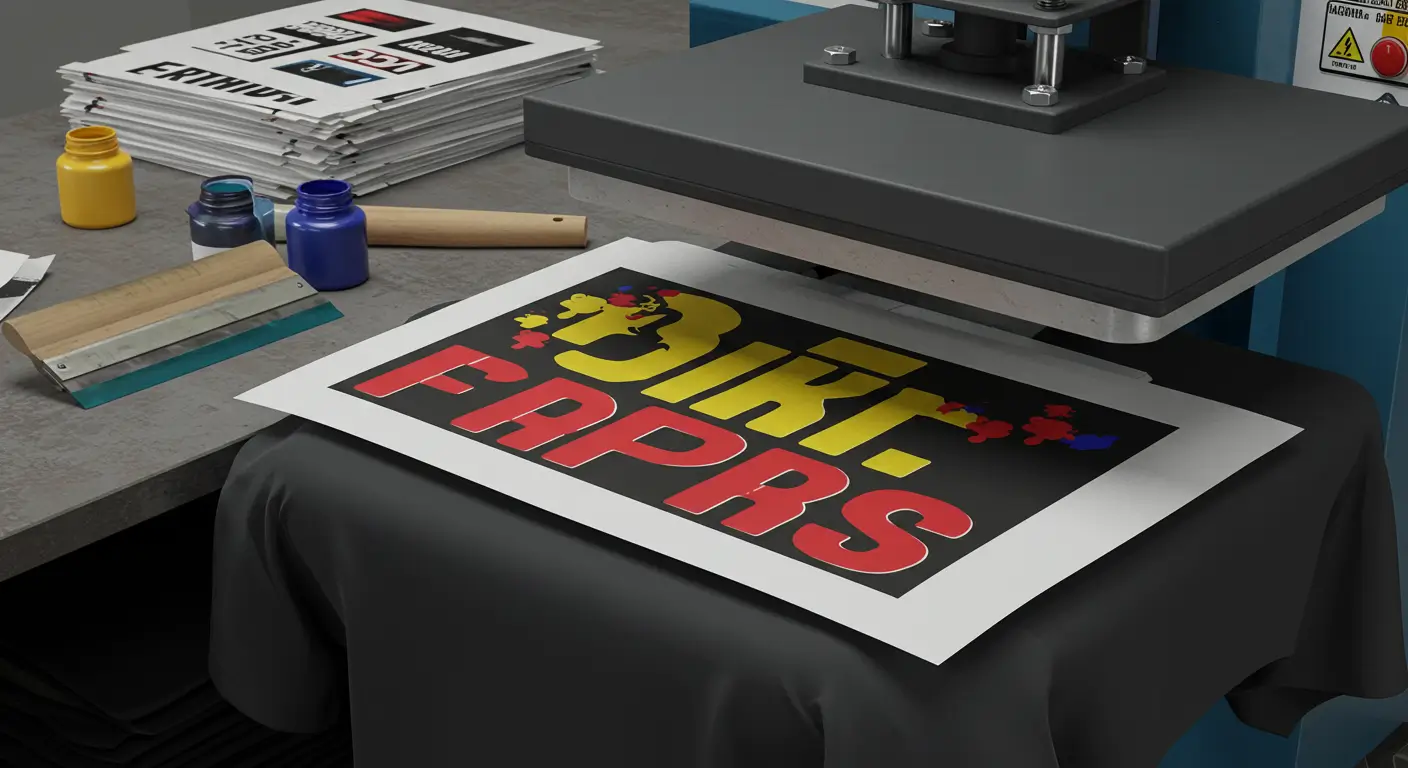
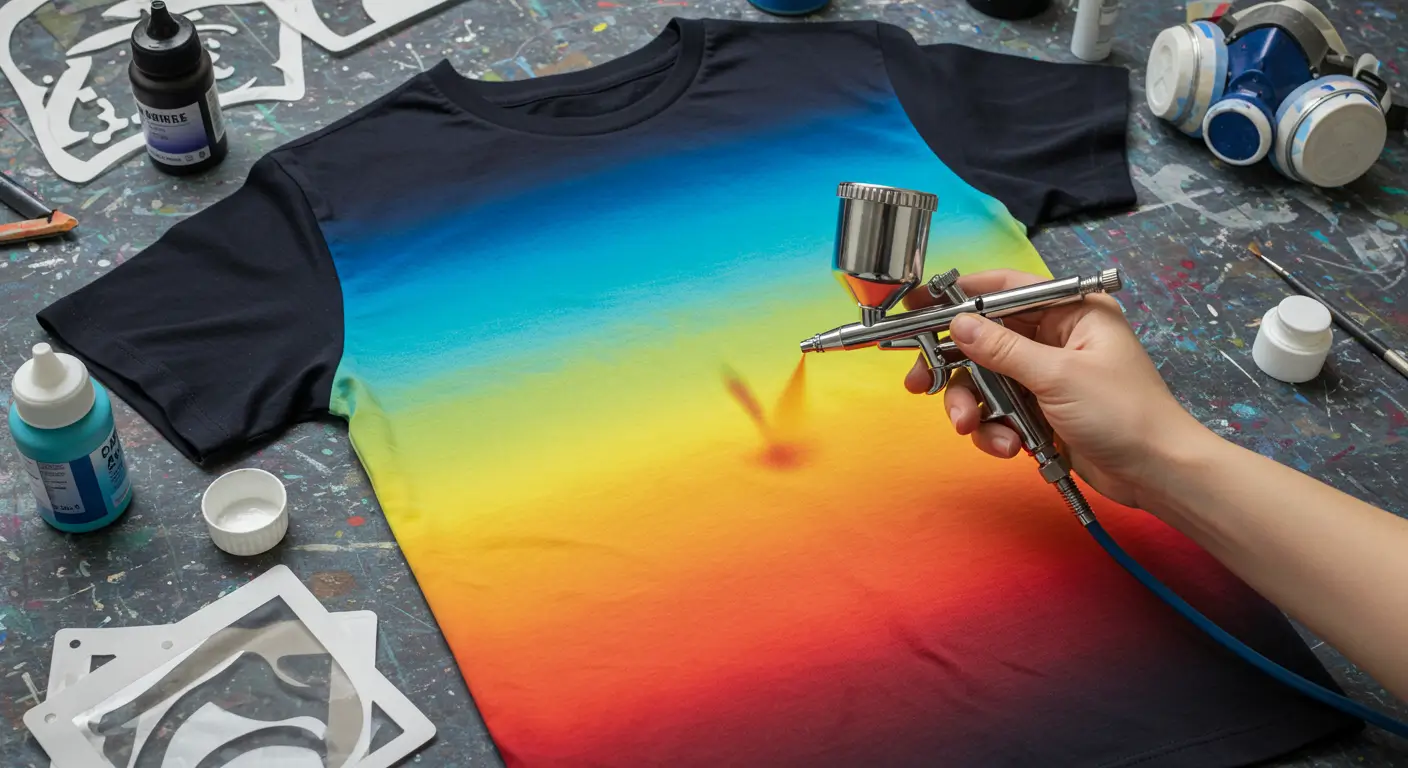
6. Airbrushing
Using airbrushes or spray guns, along with stencils, airbrushing is considered one of the most artistic types of t-shirt printing. Thanks to heat and pressure, this process makes every tank unique and is a good choice for those who like full creative control. We sometimes use airbrushing at Innovate Apparel on low volume clothes that require creativity.
Airbrushing is different from most shirt printing techniques because it doesn’t need heavy machinery. Basically, how skilled the artist is determines the outcome. The steps are to make a design, use stencils and then add the color layers by airbrushing.
Pros of Airbrushing
- Total creative control and personalization
- Great for small, unique batches
- No setup costs or screens required
Cons of Airbrushing
- Not durable, prints may fade or crack over time
- Labor-intensive and slow for large orders
- Limited detail compared to digital or screen methods
While not the best types of t-shirt printing for businesses looking for bulk output, airbrushing excels in customization. It’s a standout option in any t-shirt printing material list, especially for artistic expressions and unique fashion statements in the world of types of apparel printing.
Comparison Table: Quick Overview of 6 Printing Methods
Printing Method | Best For | Cost Efficiency | Durability | Fabric Compatibility |
Direct-to-Garment (DTG) | Small to medium runs, complex, photo prints | Medium | Medium | Cotton, blends |
Screen Printing | Large runs, simple colors | High | High | Most fabrics |
Dye Sublimation | Polyester, all-over prints | Medium | High | Polyester only |
Heat Transfer Vinyl | Lettering, simple designs | Low | Medium | Heat-tolerant fabrics |
Plastisol Transfer | Special effects, small batch | Medium | High | Most fabrics |
Airbrushing | Artistic, custom one-offs | Low | Low | Most fabrics |
How to Choose the Best T-Shirt Printing Method for You
Choosing the right method from the many types of t-shirt printing available in 2025 depends on a few key steps:
Step 1: Assess Your Design Complexity
If your design has many colors, gradients, or photo-level detail, go for methods like DTG or dye sublimation. Simple, bold designs work better with screen printing or HTV.
Step 2: Consider Your Fabric Type
Your fabric choice affects the outcome. Cotton works best with DTG and screen printing. For polyester, dye sublimation is ideal. Always check the t-shirt printing material list to match the method to the fabric.
Step 3: Evaluate Your Order Quantity
Need hundreds of shirts? Screen printing is cost-effective for bulk. Printing a few? DTG, HTV, or POD options are better for small runs.
Step 4: Set Your Budget and Production Timeline
Some shirt printing techniques have high setup costs but are cheaper in the long run. Others, like airbrushing, are slower but more personal. Match your method to your timeline and budget.
Step 5: Factor in Environmental Impact
If sustainability matters to your brand, look for eco-friendly inks and low-waste methods like DTG or water-based screen printing.
Tips for Working with Print-on-Demand Providers
- Look for platforms that support your preferred types of apparel printing
- Choose providers with good reviews for print quality and delivery speed
- Ask for sample prints to evaluate finish and fabric compatibility
- Compare costs, especially for shipping and international orders
- Understand their policies for returns, delays, and order issues
- Communicate clearly about design files and formatting needs
Conclusion
In 2025, there are many types of t-shirt printing to choose from, but the six best methods are: Direct-to-Garment (DTG) Printing, Screen Printing, Dye Sublimation, Heat Transfer Vinyl (HTV), Plastisol Transfer, and Airbrushing.
Each offers unique advantages, from sharp photo prints to durable bulk production. Choosing the right types of t-shirt printing should be based on your design, fabric, the amount you need to print and your goals.
Don’t be afraid to try different techniques to find what works best. Your ideal method might change based on your product line or creative needs. Keep experimenting. and let your apparel tell your brand’s story.
